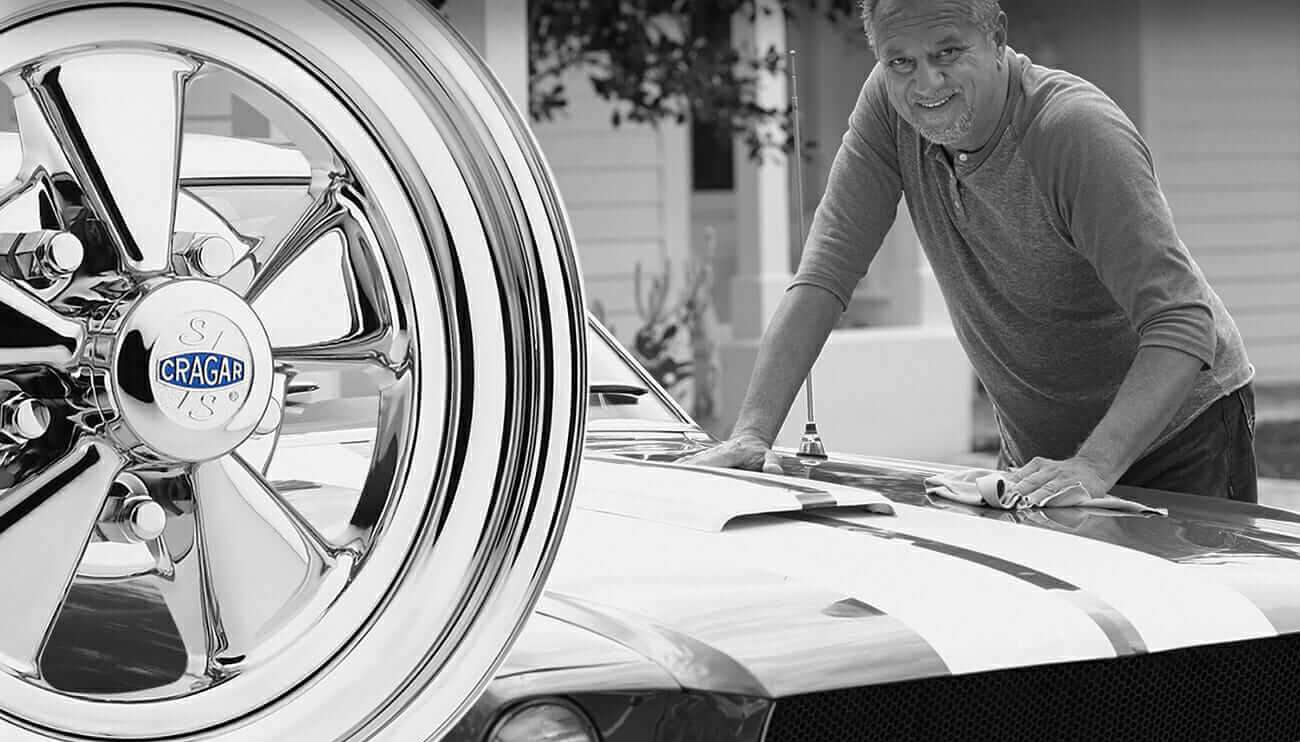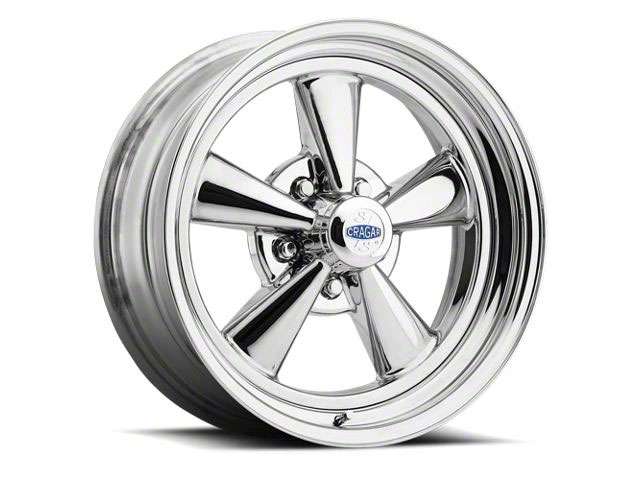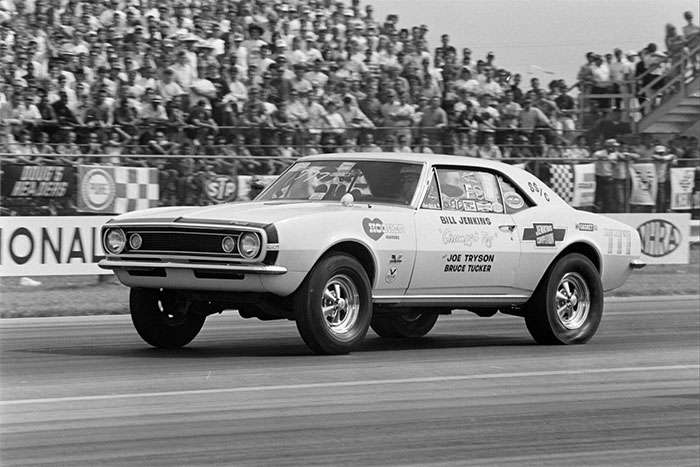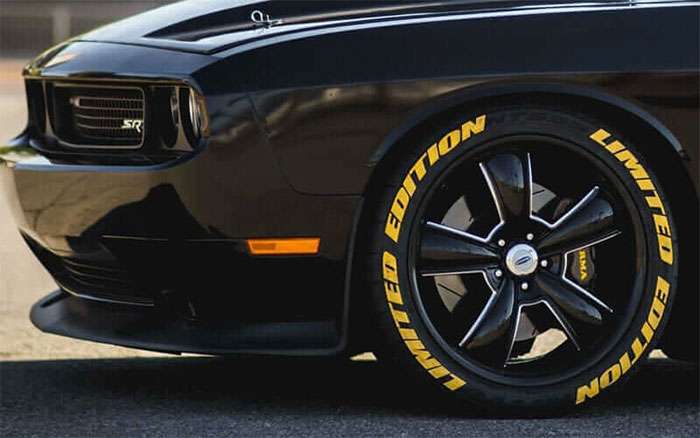
Cragar wheels represent one of America's most legendary custom wheel brands, and understanding who manufactures them today requires looking back at an incredible story that began in 1964. The famous Cragar S/S wheel, known throughout the automotive world as the "King of the Road", changed the custom wheel industry forever with its innovative chrome-plated steel rims and aluminum center design. With its timeless style and proven performance in drag racing, the Cragar S/S earned the respected title of "the world's fastest wheel".
Many wheel enthusiasts want to know where Cragar wheels are made today and whether these classics are still in production. The Cragar story starts with Crane Gartz, who founded the Cragar Corporation in 1933, but the real breakthrough came when Roy Richter spent nearly two years designing and testing performance wheels before releasing the iconic S/S Super Sport wheel. Recognized as one of the most copied wheels of all time, Cragar wheels became hugely popular with muscle car enthusiasts because they delivered both striking appearance and dependable performance. The question of current ownership and manufacturing has seen several changes throughout the company's remarkable history.
The Cragar story starts in a small California specialty shop where innovation met unfortunate timing. Crane Gartz and Harlan Fengler established the Cragar Corporation in 1930. The name "Cragar" comes from combining the first three letters of Crane Gartz's first and last names (Cra + Gar).
This early company focused on manufacturing airplane engines and cylinder heads for the Ford Model A. The products demonstrated excellent craftsmanship and technical merit, but the Great Depression hit at the worst possible moment. Economic conditions prevented the business from achieving commercial success, despite the quality of their work.
After operating for only a few years, Crane Gartz needed to find a buyer for his struggling company. George Wight, who founded Bell Auto Parts, purchased the business in 1933[61]. Wight immediately brought Cragar's inventory into his Bell Auto Parts operation and began improving the product line.
Wight spent the following decade developing the Cragar brand further. He enhanced the Cragar head design, creating a cross-flow configuration that improved engine breathing. Without Wight's business expertise and intervention, the Cragar name would likely have disappeared entirely.
World War II brought the next major change to Cragar's story. George Wight died unexpectedly in 1943, leaving his widow to run the business until 1945[61]. This created the opportunity for Roy Richter, a young fabricator and racer, to enter the picture.
Richter had already established himself in automotive circles as a skilled chassis and body builder. He created some of the era's most beautiful midgets, sprints, and championship cars. His fabrication skills developed at Bell Auto Parts, where he worked after school under George Wight's mentorship.
Richter purchased Bell Auto Parts from Wight's widow in 1945. Ten years later, in 1955, he also acquired the Cragar assets and formed the Cragar Equipment Company[61]. With his racing experience and innovative approach, Richter was committed to bringing Cragar back to prominence. This acquisition would ultimately produce one of the most famous wheel designs in automotive history.

Image Source: Ecklers.com
Roy Richter spotted a major gap in the automotive aftermarket during 1962. Hot rodders faced limited choices - they could modify stock wheels or spend serious money on expensive options like Halibrands. Richter decided to create something different - a wheel that would deliver strength, style, and affordability in one package.
The Cragar S/S wheel changed everything in the custom wheel industry. Most 'mag' wheels of the era were sand cast from magnesium or aluminum, but the S/S featured a unique two-piece construction. This innovative design combined a pressure-cast aluminum center with a conventional rolled steel rim. Both components could be chrome-plated for better appearance and easier maintenance.
The S/S worked with standard tire-mounting equipment while delivering custom looks. Laboratory testing proved the S/S stronger than conventional steel production wheels, even though it wasn't the lightest option available. This balance of appearance, strength, and practicality solved a real problem for wheel buyers.
Richter's engineering made the S/S incredibly durable. "Our answer to the problem was to increase the depth of the spoke as it approached the center, thereby forming a bridge effect," Richter explained. This created a wheel built to handle high speeds and extreme impact.
The connection between aluminum centers to steel rims used five steel lugs - one for each spoke - cast directly into the aluminum centers. These lugs welded directly to the rim, a technique that earned Richter a U.S. patent. The result was unmatched load-carrying capacity in the aftermarket wheel industry.
After nearly two years of development and testing, the Cragar S/S wheel launched in 1964. Chrome-plated versions cost just $46, while polished ones were $40 - remarkably affordable pricing. The market response was instant and massive.
Car enthusiasts, drag racers, and sports car racers rushed to buy sets of Cragar S/S wheels. The wheels became standard equipment at racing associations including the National Hot Rodding Association. During the 1960s and 1970s, more cars ran Cragar S/S wheels than any other brand, cementing their reputation as "the King of the Road".

Image Source: Hagerty
Cragar wheels became essential equipment in American performance and racing circles. The brand's rise coincided perfectly with the golden age of muscle cars and professional motorsports.
The National Hot Rod Association (NHRA) adopted Cragar wheels almost immediately after their 1964 launch. Racing legends like Don Garlits and Tom "The Mongoose" McEwen ran Cragars on their championship-winning dragsters. The wheel's ability to handle extreme torque and maintain structural integrity under racing conditions made it the preferred choice for professional racers who needed both performance and reliability.
Cragar's impact spread far beyond the drag strip into mainstream automotive culture. These distinctive wheels appeared on street rods, customs, and muscle cars across America, becoming a symbol of performance and style. The chrome-plated S/S design represented more than just a wheel—it became a statement piece that defined the look of American performance cars during their most celebrated era.
Cragar continues building on this legacy with their Modern Muscle Wheel collection. These current designs maintain the brand's racing heritage while using advanced manufacturing methods. The company stays competitive in today's performance wheel market by combining classic Cragar styling with modern engineering—proving that authentic automotive icons can adapt while staying true to their roots.

Image Source: The Carlstar Group
Cragar's iconic wheel designs continue to attract automotive enthusiasts across America. After changing ownership multiple times, the brand maintains its reputation for quality and distinctive style.
Cragar wheels are definitely still in production. Cragar actively manufactures their classic designs alongside new offerings as of 2024. The company recently announced the reopening of their Custom Shop, which produces specialized backspaced wheels to meet contemporary automotive needs. This allows owners of modern vehicles to enjoy the same Cragar style and performance that hot rod and vintage car enthusiasts have appreciated for over five decades.
The Carlstar Group currently owns and manufactures Cragar wheels. Following Roy Richter's passing, the Cragar name was licensed to several companies, including Performance Wheel Outlet and Carlisle Tire and Wheel Co., before landing with its present owner. The Carlstar Group focuses on preserving Cragar's legacy while developing new products. They maintain a complete range of custom wheels, including traditional S/S types and updated versions compatible with contemporary wheel and tire sizes.
Cragar has expanded beyond automotive applications with specialized offerings like the 401C Golf Cart S/S Series. These wheels feature:
1-piece cast chrome-plated construction
Multiple sizes (10×7", 12×7", and 14×7")
Compatible with various golf cart models
The 401C series brings Cragar's classic styling to recreational vehicles, proving that "nothing screams style like a set of Cragar wheels". You can find these and other Cragar wheels at Performance Plus Tire, a trusted retailer offering the complete lineup.
Cragar's manufacturing locations vary by product type. Their all-steel wheels are produced in the USA, while composite wheels (aluminum centers in steel rims) feature overseas-made centers assembled domestically. All-aluminum Cragar wheels are manufactured in China. This manufacturing approach allows Cragar to balance production costs with their commitment to quality across their diverse product range.
Cragar wheels represent one of the most respected aftermarket wheel brands in American automotive history. From modest beginnings in 1933 to earning the title "King of the Road," these wheels changed how car enthusiasts approach vehicle customization. The breakthrough S/S design delivered the perfect combination of style, strength, and affordability that competitors couldn't duplicate.
The Cragar legacy goes well beyond simple wheel manufacturing. These iconic wheels became symbols of American muscle car culture and drag racing excellence. The classic chrome-plated styling with its distinctive five-spoke aluminum center design remains timeless, continuing to attract enthusiasts across different generations.
Despite ownership changes over the decades, Cragar maintains its dedication to quality while entering new markets. The Custom Shop reopening and specialized products like the 401C Golf Cart Series show the brand continues pushing forward rather than relying solely on past success.
Car enthusiasts ready to add authentic Cragar style to their vehicles can explore the complete selection at Performance Plus Tire, where classic designs and contemporary options are available.
Cragar wheels deliver more than aftermarket accessories—they represent American automotive passion, innovation, and distinctive style. Manufacturing locations may have evolved over time, but Roy Richter's original vision continues with every chrome-plated wheel produced today. Whether enhancing a classic muscle car or upgrading a modern street machine, Cragar wheels keep turning heads just like they did when they first changed the industry sixty years ago.
Discover the fascinating history and current status of America's most iconic aftermarket wheel brand that revolutionized automotive customization.
Cragar is currently manufactured by The Carlstar Group, continuing production of classic designs while expanding into new markets like golf cart wheels.
The legendary S/S wheel launched in 1964 combined chrome-plated steel rims with aluminum centers, creating an affordable alternative to expensive mag wheels.
Roy Richter's innovative two-piece construction used patented steel lugs welded to rims, making S/S wheels stronger than conventional steel wheels.
Cragar became synonymous with American muscle culture, adopted by NHRA drag racing legends and defining the visual identity of 1960s-70s performance cars.
Manufacturing varies by product type: all-steel wheels made in USA, composite wheels assembled domestically with overseas centers, all-aluminum wheels from China.
The brand that started as Crane Gartz's 1930s airplane engine company has evolved into a timeless symbol of American automotive passion, proving that great design transcends generations.
While some Cragar wheels are made in the USA, manufacturing locations vary by product type. All-steel wheels are produced domestically, composite wheels have overseas-made centers assembled in the US, and all-aluminum wheels are manufactured in China.
The Carlstar Group currently owns and manufactures Cragar wheels. They maintain the brand's legacy while introducing new designs and expanding into different markets.
Cragar S/S wheels feature a revolutionary two-piece construction, combining a chrome-plated steel rim with an aluminum center. This design offers strength, style, and affordability, setting it apart from other custom wheels of its time.
Cragar wheels became synonymous with American muscle cars and drag racing in the 1960s and 70s. They were widely adopted by NHRA racers and became a cultural symbol of automotive performance and style.
Yes, Cragar has expanded its product line beyond automotive applications. They now offer specialized wheels for other vehicles, such as the 401C Golf Cart Series, bringing their classic styling to recreational vehicles.